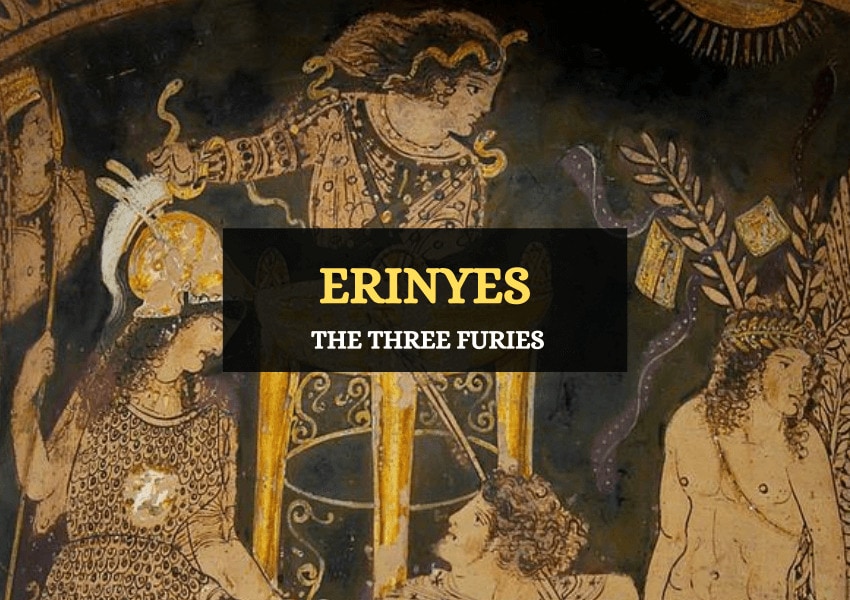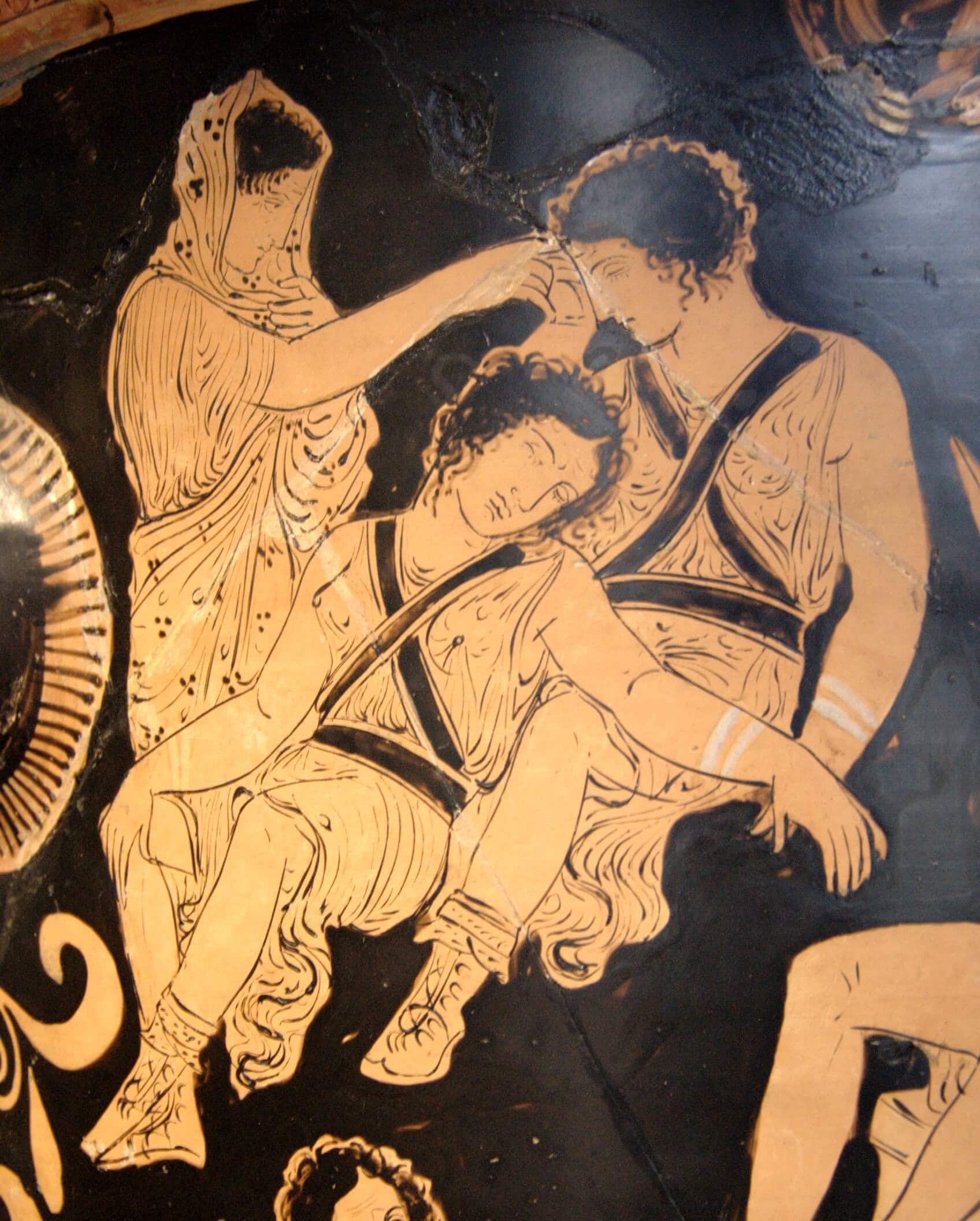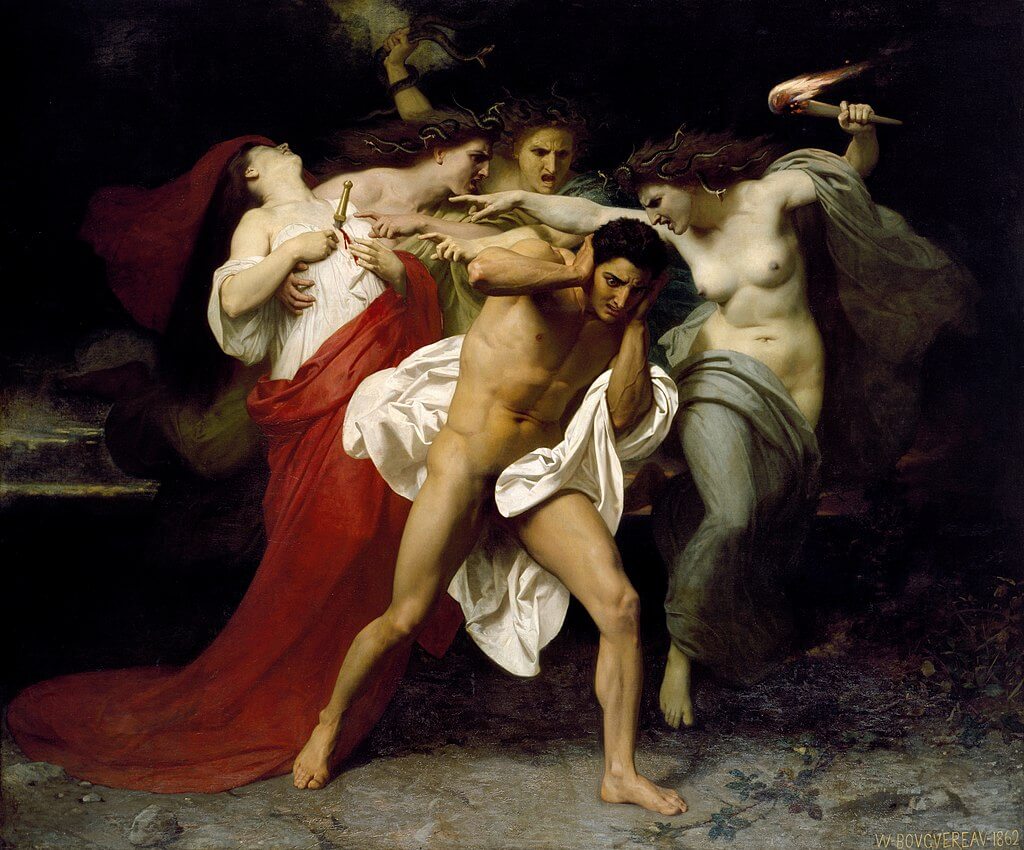
Table of Contents
The three Erinyes, called Alecto, Megaera, and Tisiphone are the chthonic goddesses of vengeance and retribution, known for tormenting and punishing those who commit crimes and offend the gods. They are also known as the Furies.
Erinyes – Origin and Description
The Erinyes are believed to be the personification of curses against those who committed crimes, but their origin vary depending on the author. Some sources say they were the daughters of Nyx, the Greek goddess of night, while others claim they are the daughters of Gaia and the darkness. Most sources agree that the three Furies were born from the blood that fell on the earth (Gaia) when Kronos castrated his father, Uranus.
The first reference of the Erinyes comes from Euripides, who also gave them their names:
- Alecto – meaning unceasing anger
- Megaera- meaning jealousy
- Tisiphone- meaning avenger of murder.
The Erinyes are described as sinister women, who wore long black robes, were surrounded by snakes and carried weapons of torture with them, especially whips. After living in the underworld, they ascended to earth to pursue murderers and those who sinned against the gods.
The Purpose of the Erinyes in Greek Mythology

According to sources, when the Erinyes were not on earth tormenting the sinful, they were in the underworld serving Hades, the god of the underworld, and Persephone, his wife and the queen of the underworld.
In the underworld, the Erinyes has several tasks to perform. They served as cleansers of sins for the dead deemed worthy by the three judges. They also served as the ones who took the condemned to punishment to the Tartarus, where the Erinyes were both jailors and torturers.
The Erinyes are linked to the crimes committed against family members, such as fratricide, matricide, and patricide because they were born from crimes within Uranus’ family. It was common for the Erinyes to step in and pursue vengeance when crimes were committed against parents, and also when people disrespected the gods.
Besides family affairs, the Erinyes are known to be the protectors of beggars as well as the keepers of oaths and the punishers of those who dare to break their oaths or make them in vain.
The Erinyes in Aeschylus’ myth
In Aeschylus’ trilogy Oresteia, Orestes kills his mother, Clytemnestra, because she killed his father, Agamemnon, in revenge for sacrificing their daughter, Iphigenia, to the gods. The matricide caused the Erinyes to ascend from the underworld.
The Erinyes then began tormenting Orestes, who sought help from the Oracle of Delphi. The Oracle advised Orestes to go to Athens and ask for the favor of Athena to get rid of the wicked Erinyes. Athena prepares for Orestes to be tried by a jury of Athenian citizens, with herself presiding as the judge.

When the jury’s decision was tied, Athena decides in favor of Orestes, but the Erinyes fly into a rage and threaten to torment all citizens of Athens and destroy the land. Athena, however, manages to convince them to stop seeking vengeance, offering them a new role as the guardians of justice and honoring them with the name Semnai (venerable ones).
The Furies then transition from being the goddesses of vengeance to being the protectors of justice, commanding the veneration of the citizens of Athens from then onwards.
The Erinyes in other Greek Tragedies
The Erinyes appear with various roles and meanings in different Greek tragedies.
- In Homer’s Iliad, the Erinyes have the ability to cloud people’s judgment and cause them to act irrationally. For example, they are responsible for the dispute between Agamemnon and Achilles. Homer mentions that they inhabit the darkness and refers to the obscurity of their hearts. In the Odyssey, he refers to them as the Avenging Furies and makes them responsible for cursing King Melampus of Argos with madness.
- In Orestes, Euripides refers to them as the kind ones or the gracious ones as saying their names could attract their unwanted attention.
- The Erinyes can be seen in both Virgil’s and Ovid’s depiction of the underworld. In Ovid’s Metamorphoses, Hera (Roman counterpart Juno) visits the underworld seeking the Erinyes to help her take revenge on a mortal who offended her. The Erinyes cause madness on the mortals who finally kill members of their family and commit suicide.
All major sources, including Aeschylus, Sophocles, and Euripides, wrote about the Erinyes tormenting Orestes after he committed matricide. For these authors and many others, the Erinyes are always linked to the practices of the underworld, as symbols of darkness, torment, torture, and vengeance.
The Erinyes in Modern Culture
Several modern authors have been inspired by the Erinyes. For instance, the movie saga Alien is reportedly based on the Erinyes, and the 2006 holocaust novel The Kindly One by Jonathan Littell replicates important themes of Aeschylus’ trilogy and the Erinyes.
Many modern movies, novels, and animated series feature the Erinyes. The three furies in Disney’s animated Hercules movie or the furies in Rick Riordan’s Percy Jackson and the Olympians are two popular examples.
In Greek art, the Erinyes are normally depicted on pottery chasing Orestes or accompanied by Hades.
Wrapping Up
Although the Erinyes are related to suffering and darkness, their role on earth, as Athena saw it, was to deal with justice. Even in the underworld, they help the worthy and torment the unworthy. Taken in this light, the Erinyes symbolize karma and doling out deserving punishment.








